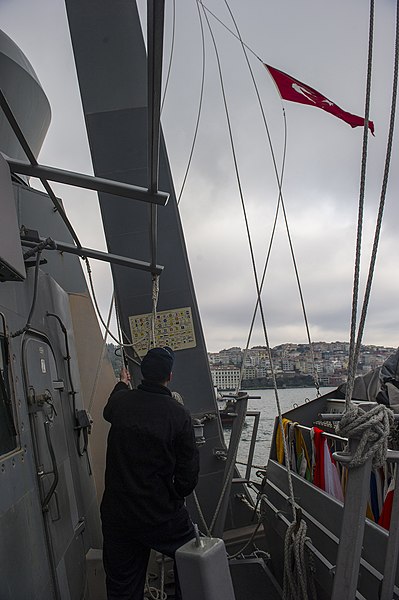A maritime flag is a flag designated for use on ships, boats, and other watercraft. Naval flags are considered important at sea and the rules and regulations for the flying of flags are strictly enforced. The flag flown is related to the country of registration: so much so that the word "flag" is often used symbolically as a metonym for "country of registration".
House flags, c. 1900
Burgee of Barrachois Harbour Yacht Club, Nova Scotia, Canada
A courtesy Turkish flag is raised aboard the destroyer USS Truxtun as the ship transits the Bosphorus strait
Superyacht Ariane NI in Toulon harbour, flying her British ensign and a French courtesy flag
A flag is a piece of fabric with a distinctive design and colours. It is used as a symbol, a signalling device, or for decoration. The term flag is also used to refer to the graphic design employed, and flags have evolved into a general tool for rudimentary signalling and identification, especially in environments where communication is challenging. Many flags fall into groups of similar designs called flag families. The study of flags is known as "vexillology" from the Latin vexillum, meaning "flag" or "banner".
United Nations members' national flags
Setting up a flag could also possess the meaning of conquering something. Jaan Künnap with the flag of Estonia at the top of Lenin Peak (7,134 m [23,406 feet]) in 1989.
Bronze flag Derafsh Shahdad found in Shahdad, Iran, third millennium BC
Sujagi of Eo Jae-yeon, captured in 1871








